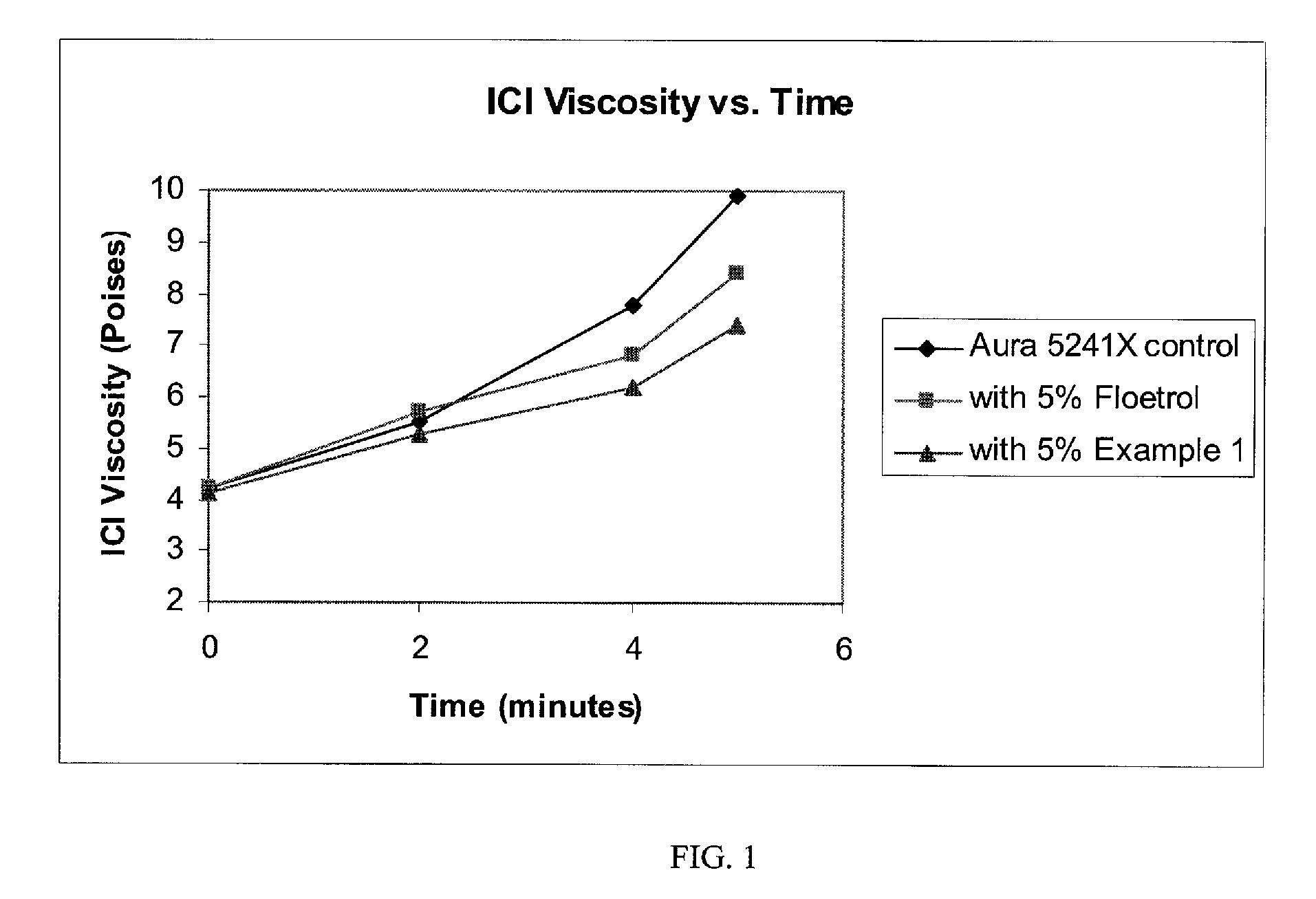Latex based open-time extenders for low VOC paints
a paint and latex technology, applied in the field of paint extenders, can solve the problems of limiting the level of vocs in paint compositions, unacceptably short open time, skinning of left-open paints, etc., and achieves the effects of slowing down the drying time, varying the transparency of the paint, and more even strokes
- Summary
- Abstract
- Description
- Claims
- Application Information
AI Technical Summary
Benefits of technology
Problems solved by technology
Method used
Image
Examples
example 1
Paint / Open-Time Extender Formulated Using Multi-Stage Acrylic Latex
[0038]A paint extender (100 gallons) was prepared using a multi-stage acrylic latex having a 47.1% solid content and mean particle size of 95 nm. This paint extender did not comprise an open time agent. The paint extender contained the following quantity of ingredients listed in Table 1.
[0039]
TABLE 1Ingredients of Acrylic Latex-Based Paint ExtenderQuantityIngredient(pounds)Acrylic Latex (47.1% wt solid content)68.9Water763.8AMP-95 ® (multifunctional additive, commercially0.1available from by Angus Chemical Company of BuffaloGrove, Ill.)KATHON ® LX 1.5% (preservative, commercially0.8available from Rohm and Haas Company of Philadelphia,Penn.)Adipic Dihydrazide (crosslinker)0.8BYK-024 ® (defoamer, commercially available from1.0BYK-Chemie GmbH of Wesel, Germany)Total Weight835.4
[0040]The acrylic latex makes up about 8.25% by weight of inventive Example 1, and since the acrylic latex has a 47.1% solid content, the total s...
examples 2a and 2b
Paint Extender Formulated Using Multi-Stage Vinyl Latex
[0062]In Example 2A, a paint extender (100 gallons) was prepared using a multi-stage vinyl latex having a 49.6% solid content and mean particle size of 95 nm. In Example 2B, the paint extender further comprised a commercial open time agent (Aqualon Optima D-4023), which acts synergistically with the inventive Example 2A to prolong the time it takes for a paint to dry. More particularly, the paint extenders contained the following quantity of ingredients are listed below in Table 5.
[0063]
TABLE 5Ingredients of Vinyl Latex-Based Paint ExtenderExample 2AExample 2BQuantityQuantityIngredients(pounds)(pounds)Vinyl Latex (49.6% wt solid content)153.6153.6Water660.8660.8Aqualon Optima D-4023 (open time agent, commercially0.017.0available from the Aqualon Division of Hercules, Inc. ofWilmington, Del.)AMP-95 ® (multifunctional additive, commercially available0.20.2from by Angus Chemical Company of Buffalo Grove, Ill.)KATHON ® LX 1.5% (pres...
PUM
| Property | Measurement | Unit |
|---|---|---|
| mean diameter | aaaaa | aaaaa |
| mean diameter | aaaaa | aaaaa |
| mean diameter | aaaaa | aaaaa |
Abstract
Description
Claims
Application Information
 Login to View More
Login to View More - R&D
- Intellectual Property
- Life Sciences
- Materials
- Tech Scout
- Unparalleled Data Quality
- Higher Quality Content
- 60% Fewer Hallucinations
Browse by: Latest US Patents, China's latest patents, Technical Efficacy Thesaurus, Application Domain, Technology Topic, Popular Technical Reports.
© 2025 PatSnap. All rights reserved.Legal|Privacy policy|Modern Slavery Act Transparency Statement|Sitemap|About US| Contact US: help@patsnap.com

